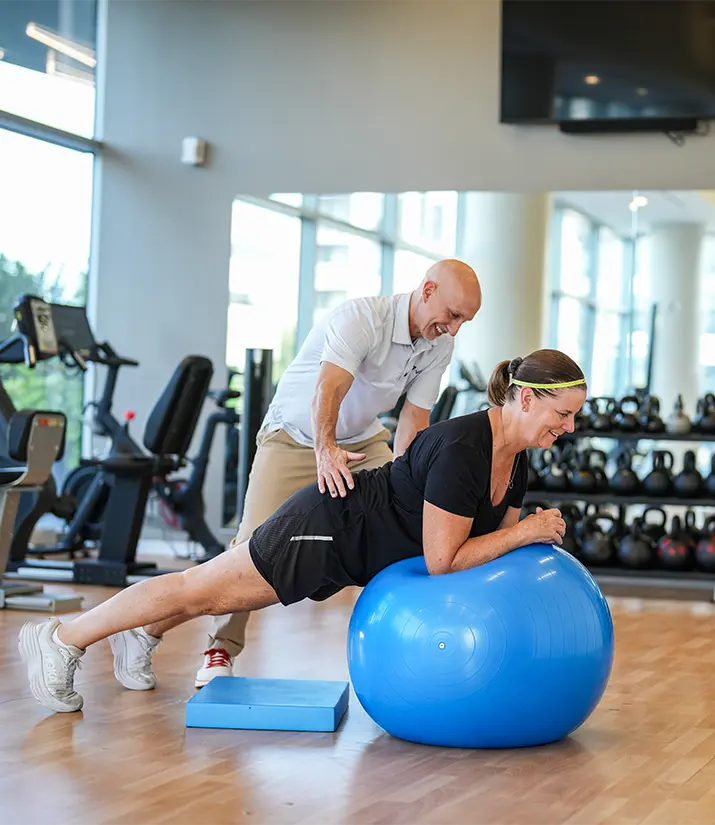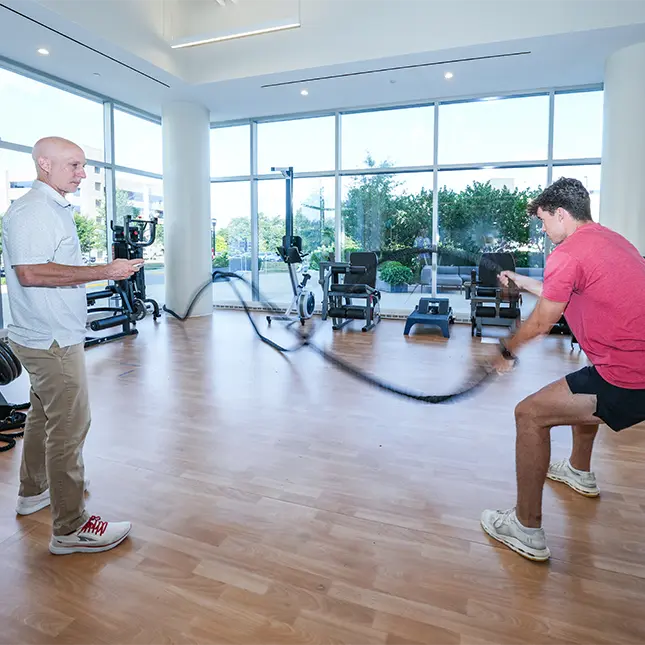Functional Exercise
What Is Functional Exercise?
Functional exercise is the foundation of modern physical therapy at VSI Physical Therapy, an award-winning physical therapy practice located in Reston. Our movement-based physical therapy strengthens the patterns you use every day, such as squatting, lunging, hinging, pushing, pulling, and carrying, to reduce pain and get you back to life. This approach is also known as functional training, functional strength training, and activity-based rehabilitation because it rebuilds strength and control for real life tasks.
Exercise in all its forms is the absolute best tool when it comes to recovery. Functional exercise trains the body’s core movement patterns that are hard wired as we develop, from rolling and planking to squatting and standing. Training is organized around real life tasks so the strength and mobility you gain in the gym translate to walking the dog, lifting a suitcase, playing with your kids, and returning to your sport. We emphasize quality of motion first then add weight and speed as you improve. Many people think of this as functional fitness or everyday movement training because it focuses on how you live and move.
Functional Exercise Benefits
Functional exercise is an effective option for patients who want pain relief, better movement, and lasting results from movement-based physical therapy. Exercise and movement are skills, and all skills require practice to see results. Also called functional training, functional strength training, and activity-based rehabilitation, this approach restores the patterns you use every day and supports long-term health.

Conditions We Treat with Functional Exercise
Functional exercise can benefit many people including those with back or joint pain, athletes in early rehab, and anyone looking to improve mobility or return to their sport or daily tasks safely. For many, it serves as the bridge between surgery and returning to normal activities. Some common conditions that might be guided with movement and exercise during physical therapy include:
- Osteoarthritis and rheumatoid arthritis
- Lower extremity ligament injuries including ankle sprains and MCL/LCL/ACL/PCL injuries
- Knee meniscus injuries
- Hip labral injuries
- Rehabilitation after lumbar spine surgery
- Rehabilitation after hip, knee, ankle, and foot surgery
- Fractures of the lower extremity
- Soft tissue injuries including Achilles patellar, quadriceps, calf, hamstring, hip flexor, and gluteal tendinopathy
- Balance disorders
- Neurologic conditions including stroke, multiple sclerosis, and Parkinson’s disease
- Chronic pain conditions including low back pain and fibromyalgia
- Cervical neck pain
How Can Functional Exercise Help You?
What to Expect During a Functional Exercise Session

Why VSI Physical Therapy Uses Functional Exercise for Recovery
Functional exercise is more than just a treatment, it is part of our comprehensive philosophy on recovery. We believe recovery starts before your surgery even takes place and continues long after the procedure is complete. This forward-thinking approach is at the heart of the Recovery Revolution™, a movement created to transform how patients experience healing and restoration.
Functional exercise is one of the advanced modalities we use to set the stage for optimal recovery. This therapy builds strength and resilience and accelerates your return to the life you love. It is part of our 5 Pillars of Recovery, which include cutting-edge technology, surgical precision, continuity of care, and specialized recovery modalities.

